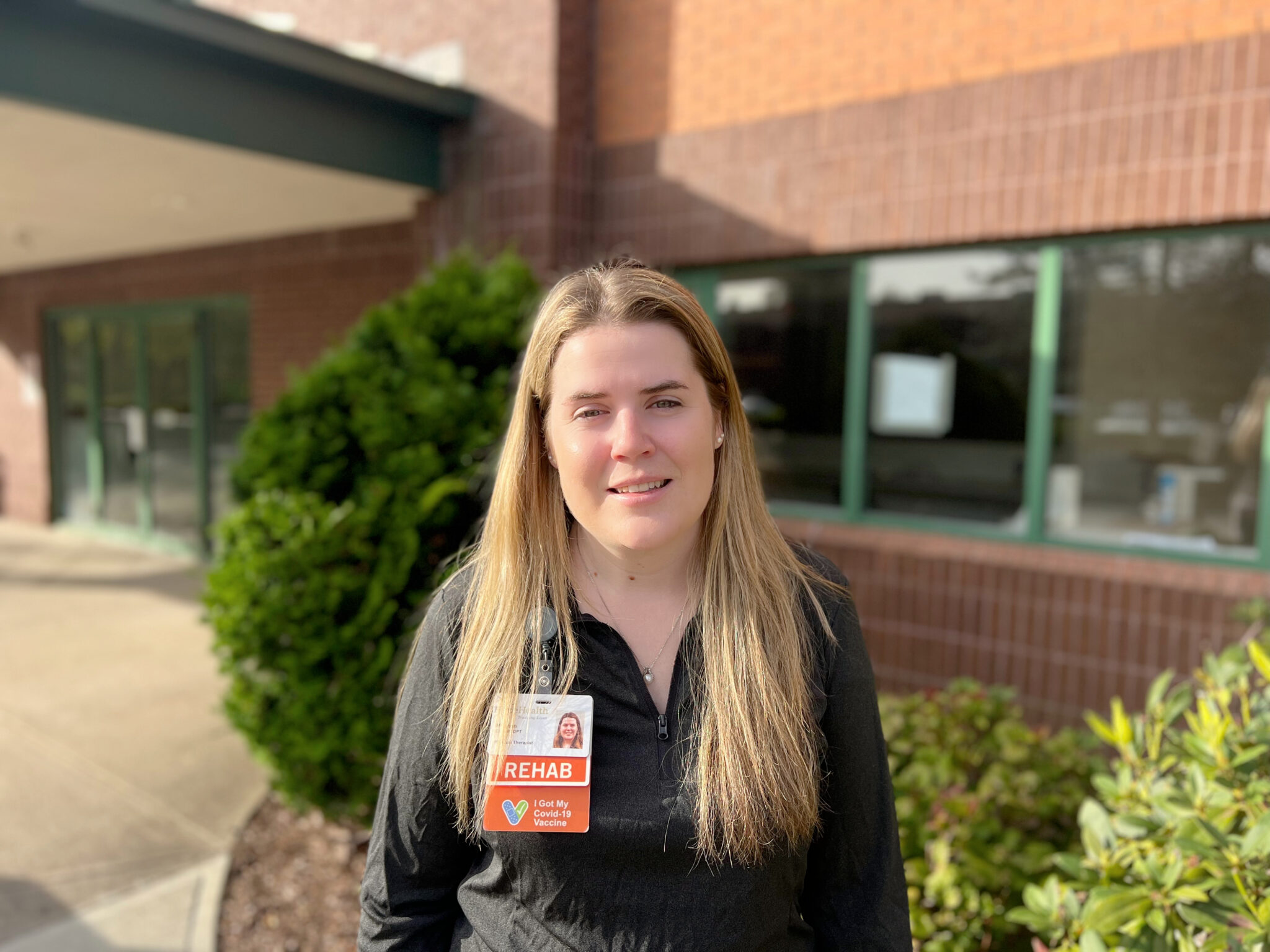HopeHealth physical therapist Meghan Cunniff recently stood at the top of a flight of stairs, coaching a 50-year-old patient in a leg brace through a series of deep, calming breaths. “You can do this,” she assured her.
To the patient, the stairs were more than just an exercise. They were her greatest fear. She’d fractured her knee on them weeks earlier, and hadn’t been down them — or out of the house — since.
That’s why Meg was there.
Physical therapists are experts in movement, pain management, and much more. Through their work, they empower patients to maintain and reclaim their independence in the large and small ways that matter most.
Here’s how.
1. After an injury or illness, physical therapy can speed up your road to recovery.
Whether you’ve just had hip replacement surgery due to a fall or ankle surgery after a competitive sports injury, a physical therapist can help you get back to your 100%. They’ll personalize exercises for strength and flexibility that hone in on your injury, and its impact on your daily life.
“I tell a lot of my patients: ‘I know it’s a big change for you to rely on other people to help you do your day-to-day things,’” says Meg. “‘If we work on it together, we can get you back to what you were doing before.’”
That included the 50-year-old patient with the knee injury. With the help of Meg and her HopeHealth physical therapy assistant, Leigh, the patient learned how to safely conquer her front steps — and just as importantly, her fear.
2. If you’re living with a long-term or chronic condition, physical therapy can improve your quality of life.
Many of Meg’s patients are living with chronic conditions like heart failure, cancer, pulmonary disease or diabetes. Others are coping with the long-term effects of a stroke or illness. Still others are simply dealing with the normal effects of aging on strength and balance.
If any of that sounds familiar, a physical therapist can help educate you and your family about how to live safely within the confines of your particular condition. For example, they can help you understand your biggest health risks and stressors, and even learn how to conserve energy as you go about your day.
Often, they can also show you that you’re capable of more than you may realize.
“When we first meet a lot of patients, they’re stuck in their bed or wheelchair,” says Meg. “We can show them how to get around safely, and practice together to give them that confidence boost. Just being able to get around and go outside is a big difference in quality of life.”
3. If you struggle with pain, you can learn stretches and strengthening exercises to help.
“Part of why I went into physical therapy was because I was fascinated with getting to the root of what’s causing somebody’s pain, not just covering it up with medications,” says Meg. “I like working with a team to figure out the puzzle of what’s going on and how to fix it.”
For example, when patients come to her with chronic back pain, she’ll show them stretches and exercises that can make a big difference — as simple as sitting in a chair and gently twisting.
“You have to keep them up, but these simple exercises have helped some of our patients tremendously,” she says.
4. No matter what you’re dealing with, a physical therapist will help you prioritize what matters most to you.
“When I first meet a patient, I leave myself a good amount of time just to listen,” says Meg. “I’ll say, ‘I have all the notes from the doctor, but why don’t you tell me what’s going on?’ I want their perspective.”
After all, physical therapy ultimately aims to help you maintain or reclaim your best quality of life — and that’s unique to you.
“We work on the things that patients are interested in,” says Meg. “For instance, if they want to be able to get outside in the yard, we need to make sure their balance is good on uneven surfaces. We incorporate their personal goals into their plan.”
5. If you’re getting care at home, your plan will be customized for your everyday space and routines.
As part of HopeHealth Visiting Nurse, Meg provides at-home physical therapy throughout Rhode Island, often in coordination with home care nurses and occupational therapists. Patients in Massachusetts receive similar home care from HopeHealth Community VNA.
“Being able to work with patients in their home environment, where their family is, where their routines are — it definitely benefits the patient, and it’s very rewarding for us as their care team,” she says. “That’s why I fell in love with home care.”

